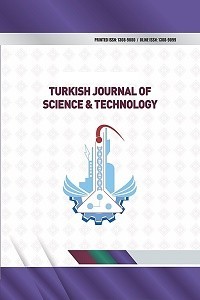TiO2 Memristor Modelling with LabVIEW
TiO2 Memristor Modelling with LabVIEW
LabVIEW, Memristor modelling and simulation, physical behavior,
___
- 1. L. Chua, “Memristor-the missing circuit element,” Circuit Theory, IEEE
- 2. G. Dearnaley, A. M. Stoneham, and D. V. Morgan, “Electrical phenomena in amorphous oxide films,” Reports on Progress in Physics, vol. 33, no. 3, p. 1129, 1970. [Online]. Available: http://stacks.iop.org/0034-4885/33/i=3/a=306
- 3. D. B. Strukov, G. S. Snider, D. R. Stewart, and R. S. Williams, “The missing memristor found,” Nature, vol. 453, pp. 80–83, 2008.
- 4. ME Sahin, H Guler, T Kaya, LabVIEW Model Of Memristor With Nonlinear Dopant Drift, European Journal of Technic 6 (2), 124-130,2016
- 5. Mazumder, P., Kang, S. M., & Waser, R. (2012). Memristors: devices, models, and applications. Proceedings of the IEEE, 100(6), 1911-1919.
- 6. Biolek, Z., Biolek, D., & Biolkova, V. (2009). SPICE Model of Memristor with Nonlinear Dopant Drift. Radioengineering(18), 210-214.
- 7. Zhang, Y., Xuliang, Z., & Juebang, Y. (2009). Approximated SPICE model for memristor. In Communications, Circuits and Systems, ICCCAS 2009. International Conference (pp. 928-931). IEEE.
- 8. R. Williams, How we found the missing memristor, Spectrum, IEEE 45 (2008), no. 12, 28 –35. 2, 7, 9, 24, 28
- 9. Guler, H., & Ata, F. (2014). The Comparison of Manual and LabVIEW Based-Fuzzy Control on Mechanical Ventilation. Journal of Engineering in Medicine, 916-925.
- 10. Aydin, S. G., Turgay , K., & Hasan , G. (2016). Wavelet-based study of valence–arousal model of emotions on EEG signals with LabVIEW. Brain Informatics, 3(2), 109-117.
- 11. Chua, L. (2011). Resistance switching memories are memristors. Applied Physics A, 102(4), 765-783.
- ISSN: 1308-9080
- Başlangıç: 2009
- Yayıncı: Fırat Üniversitesi
Study of Fuzzy Logic Control of Dc-Dc Buck Converter
Zeynep Bala DURANAY, Hanifi GULDEMIR
PWM Control of AC Chopper Fed by Unbalanced 3-Phase Voltage Source
Fractal Analysis of Shear-thinning Fluid Flow through Porous Media
Handwriting Character Recognision by using Fuzzy Logic
Enes VARDAR, Kaplan KAPLAN, H. Metin ERTUNÇ
TiO2 Memristor Modelling with LabVIEW
Muhammet Emin ŞAHİN, Hasan GÜLER
Elliptic Filter Based Noninvasive Blood Pressure Analyze with LabVIEW
Duygu KAYA, Mustafa TÜRK, Turgay KAYA
PI and Fuzzy Logic Control of Photovoltaic Panel Powered Synchronous Boost Converter
A. BELADEL, A. KOUZOU, A. HAFAIFA, Sedat SUNTER, D. MAHIA
Development of Smart Security System for Remote Control Using Small Computer
